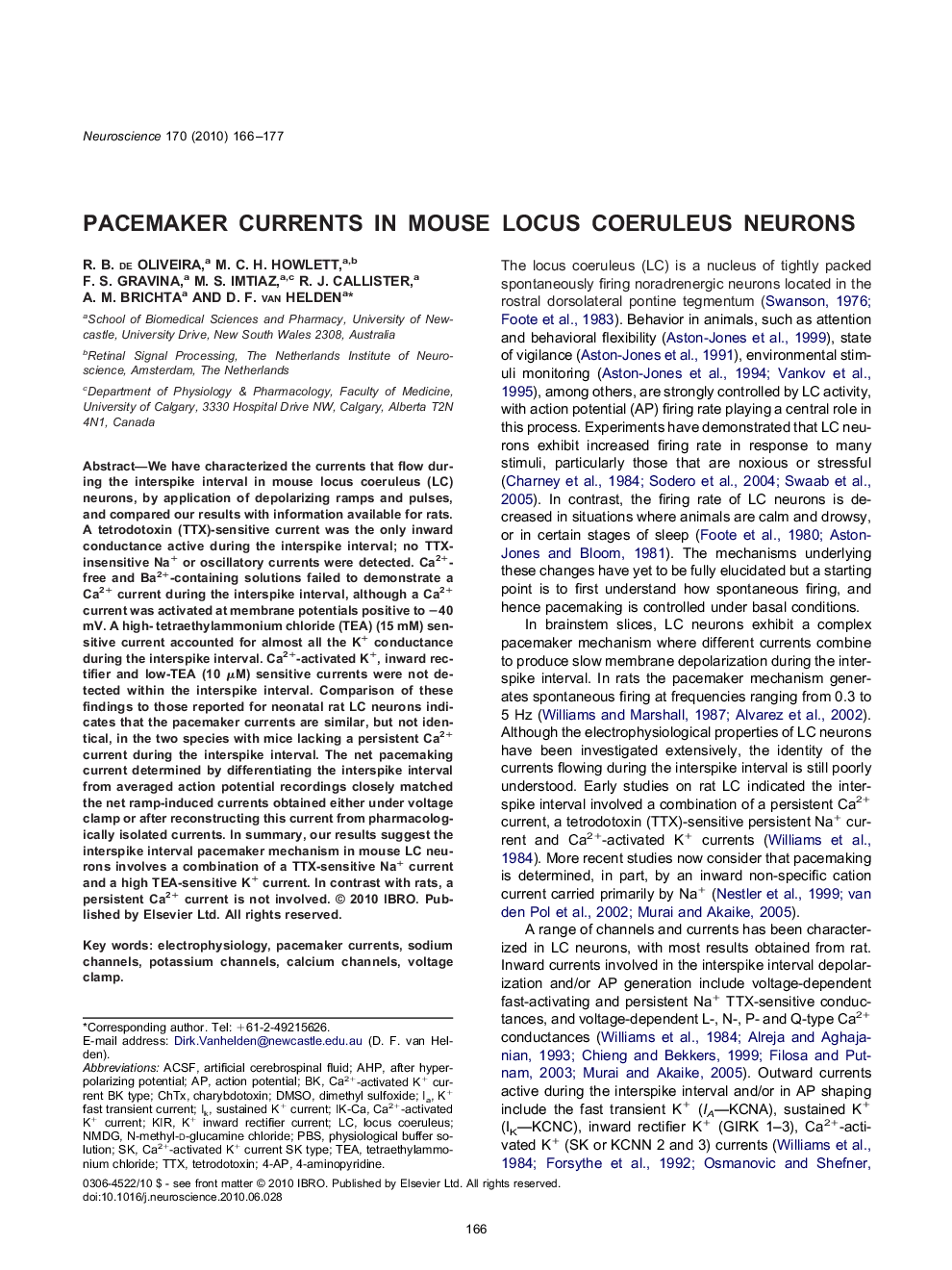| کد مقاله | کد نشریه | سال انتشار | مقاله انگلیسی | نسخه تمام متن |
|---|---|---|---|---|
| 6277200 | 1295749 | 2010 | 12 صفحه PDF | دانلود رایگان |
عنوان انگلیسی مقاله ISI
Pacemaker currents in mouse locus coeruleus neurons
دانلود مقاله + سفارش ترجمه
دانلود مقاله ISI انگلیسی
رایگان برای ایرانیان
کلمات کلیدی
PBStetraethylammonium chlorideKirNMDGTTXChTxaCSF4-AP4-aminopyridine - 4-آمینوپیریدینCa2+-activated K+ current - Ca + 2 فعال K + جریانDMSO - DMSOElectrophysiology - الکتروفیزیولوژیtetrodotoxin - تترو دوتوکسین Dimethyl sulfoxide - دیمتیل سولفواکسیدAHP - فرایند تحلیل سلسلهمراتبیlocus coeruleus - لوکوس سیرولئوسartificial cerebrospinal fluid - مایع مغزی نخاعی مصنوعیaction potential - پتانسیل عمل charybdotoxin - چاریبدوتوکسینTEA - چایsodium channels - کانال های سدیمPotassium channels - کانال های پتاسیمCalcium channels - کانال های کلسیمVoltage clamp - گیره ولتاژ
موضوعات مرتبط
علوم زیستی و بیوفناوری
علم عصب شناسی
علوم اعصاب (عمومی)
پیش نمایش صفحه اول مقاله

چکیده انگلیسی
We have characterized the currents that flow during the interspike interval in mouse locus coeruleus (LC) neurons, by application of depolarizing ramps and pulses, and compared our results with information available for rats. A tetrodotoxin (TTX)-sensitive current was the only inward conductance active during the interspike interval; no TTX-insensitive Na+ or oscillatory currents were detected. Ca2+-free and Ba2+-containing solutions failed to demonstrate a Ca2+ current during the interspike interval, although a Ca2+ current was activated at membrane potentials positive to â40 mV. A high- tetraethylammonium chloride (TEA) (15 mM) sensitive current accounted for almost all the K+ conductance during the interspike interval. Ca2+-activated K+, inward rectifier and low-TEA (10 μM) sensitive currents were not detected within the interspike interval. Comparison of these findings to those reported for neonatal rat LC neurons indicates that the pacemaker currents are similar, but not identical, in the two species with mice lacking a persistent Ca2+ current during the interspike interval. The net pacemaking current determined by differentiating the interspike interval from averaged action potential recordings closely matched the net ramp-induced currents obtained either under voltage clamp or after reconstructing this current from pharmacologically isolated currents. In summary, our results suggest the interspike interval pacemaker mechanism in mouse LC neurons involves a combination of a TTX-sensitive Na+ current and a high TEA-sensitive K+ current. In contrast with rats, a persistent Ca2+ current is not involved.
ناشر
Database: Elsevier - ScienceDirect (ساینس دایرکت)
Journal: Neuroscience - Volume 170, Issue 1, 29 September 2010, Pages 166-177
Journal: Neuroscience - Volume 170, Issue 1, 29 September 2010, Pages 166-177
نویسندگان
R.B. de Oliveira, M.C.H. Howlett, F.S. Gravina, M.S. Imtiaz, R.J. Callister, A.M. Brichta, D.F. van Helden,